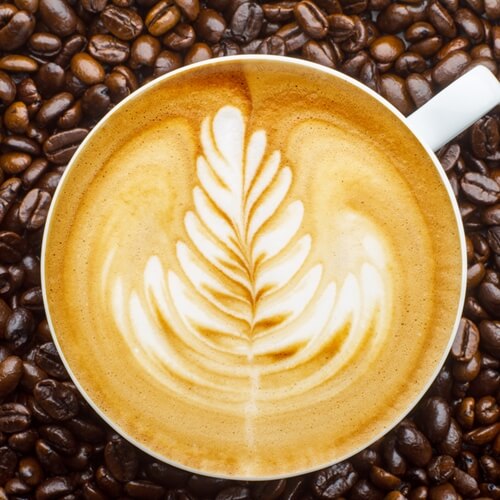A Guide To Latte Art
There are many forms of artistic expression, one of which is food. But more recently, latte art has been sweeping the nation with intricate and beautiful designs gracing the surfaces of hot and steaming cups of lattes. This art is a method of preparing coffee by pouring steamed milk into a shot of espresso and creating a pattern or design on the surface. Its intent is to promote respect for caffe espresso as a culinary art that emphasizes both flavor and presentation.
David Schomer, owner of Seattle’s Espresso Vivace, is credited with bringing latte art to the forefront of coffee culture, using something known as “velvet foam.” He worked on his technique of free-pouring the textured milk using the sides of the cup to form various swirls and waves. By 1989, the famous heart pattern was perfected, creating a white heart surrounded with concentric rings that resemble ripples in a pond. Schomer was able to form these rings by shaking the pitcher, a technique he learned from a barista in Milano.
The next popular pattern that Schomer was after included the fern-like waves of a floral design, otherwise known as the Rosetta pattern. It took about six months for him to perfect this method as well.
If you wish to create your own latte art, here are a few suggestions and tips to help you sharpen your skills:
Keep the milk cold
Always make sure to use fresh and cold milk. Don’t expose it to light or heat before steaming it, and never use the same milk again when working on latte art.
The jug
Be sure to use a stainless steel jug with a narrow spout. It should be cold and clean before use and filled with just enough milk for your cup. If you don’t have enough milk, the liquid will heat up too quickly.
The process
Start by pouring a thin stream of milk about 3 inches above the rim of your mug. It should sink below the foamy coffee and create a supporting base for the coffee in the bowl of the mug. When you bring your pitcher down low and increase your flow, you should see a halo of white foam form on the top of the beverage. To begin forming a Rosetta pattern, start moving the pitcher from side to side using only your hand, not your entire arm. When a white ring appears, lift the pitcher up again and stop pouring milk. Repeat this step to create the smallest top part of the flower, and then finish the design by slowly lifting the spout of the pitcher while pouring the last bit of milk in a thin stream. Online culinary school can help you perfect your technique for beautifully topped lattes.
If you like this post, please be sure to check out the following!
How To Make A Pumpkin Spice
Beat The Mondays With A Grumppacinno
Coffee Grounds Can Be Used To Make Alcohol


